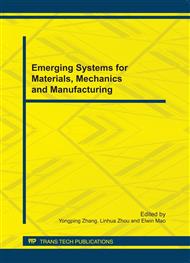p.51
p.56
p.60
p.65
p.70
p.75
p.79
p.84
p.91
Improve Lower Leg Impact Performance Considering Pedestrian Protection
Abstract:
To improve the lower leg impact performance of the vehicle bumper in the collision of vehicle to pedestrian, the finite element (FE) model of a vehicle front structure was developed, and correlated with the test results. The lower legform impactor FE model was used to investigate the performance of the vehicle bumper at different structure conditions. It was finally determined that vehicle to lower legform impact performance can be improved by reducing the energy absorbing foam stiffness and modifying the bumper bracket structure to enlarge the collapse space.
Info:
Periodical:
Pages:
70-74
Citation:
Online since:
October 2011
Authors:
Price:
Сopyright:
© 2012 Trans Tech Publications Ltd. All Rights Reserved
Share:
Citation:


